
10 eCommerce List Building Tips For 2024
Are you looking for proven ways to create a successful eCommerce list-building strategy? If the answer is yes, this guide will get you started!
There’s never been a more urgent time to focus on email marketing. E-commerce is moving from an acquisition to a retention economy. What works today won’t work tomorrow, except for email, which drives an impressive ROI of $42 for every $1 spent.
Here, we share ten practices to help you manage your e-commerce list building like a pro!
Already on it? With Moosend, you can build segmented lists of your email subscribers and create personalized campaigns in simple steps!
1. Use Popups For Desktop And Flyouts For Mobile Devices
There is no doubt that mobile drives eCommerce growth globally. In 2021 alone, mobile is on track to rake in $3.5 trillion, making up almost three-quarters (72.9%) of e-commerce sales. As you understand, it’s time to optimize your websites for mobile, starting with lead capture forms.
A lead capture form – also known as an email sign-up or online form – is a website asset that asks site visitors for their email (or other contact details). They are usually in the shape of popups, those small windows that appear on the screen with calls-to-action for visitors.
However, popups can create a poor experience for mobile users. And that’s not all. A few years ago, Google started penalizing websites with intrusive mobile popups by demoting them in search rankings. And this is problematic for eCommerce sites investing in SEO.
So how can you resolve this challenge? A simple solution is to create two versions of your lead capture forms – a popup for desktop and a flyout for mobile. A flyout appears at the bottom of the screen. Overall, they’re more subtle than popups and don’t disrupt the user experience.
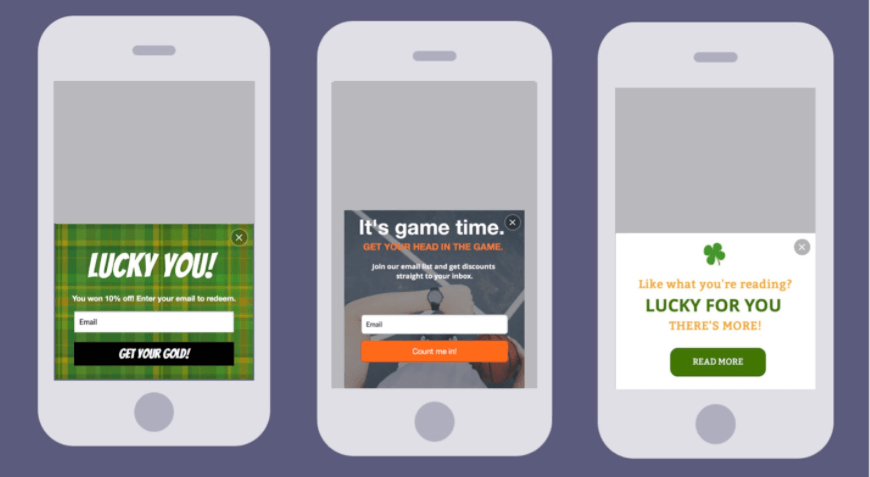
Long story short, triggering popups and flyouts is one of the most impactful optimizations to speed up your eCommerce list building!
2. Welcome Users Within The First 3 To 10 Seconds
It’s shocking how many online stores trigger their lead capture assets when website visitors show exit intent. Consider how this would feel like in real life. You enter a store and start looking around while the clerk ignores you. Then, right before you leave, the clerk lights up and says, “Welcome to our store! How about a 10% discount?”
So instead, how about welcoming new visitors when they enter your eCommerce store just like you would in a retail scenario? The highest-converting time is usually within the first 3 to 10 seconds. For most store owners, showing popups within 5 seconds is a great starting point.
Here’s a branded message by Lost Travel:
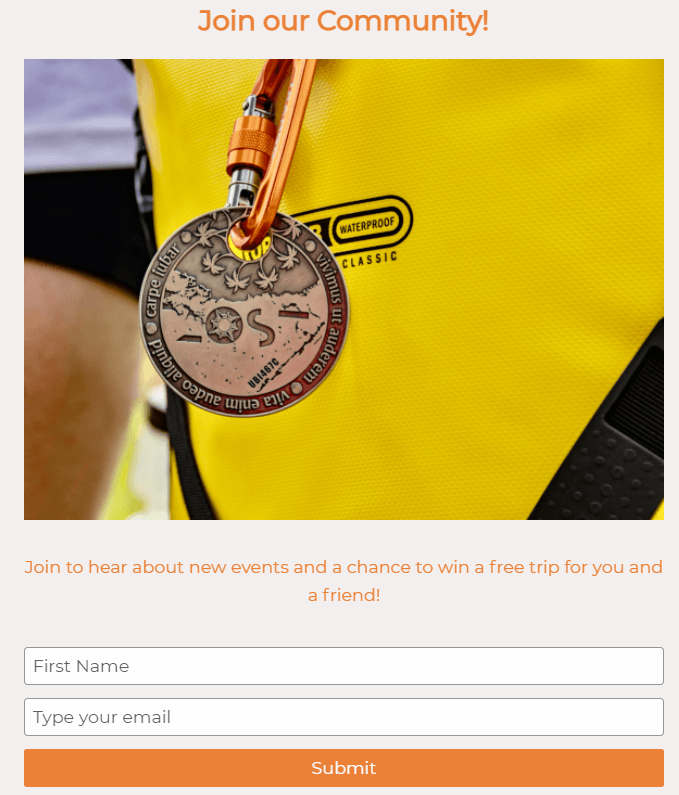
So, based on our last two tips, you should create two “Welcome” versions: A popup that greets new desktop users within 5 seconds and a flyout for mobile users within a similar time frame.
3. Create Cart Saver Popups And Flyouts On Checkout
Let’s expand our eCommerce list-building toolkit with two more components: Cart-saver popups and flyouts for desktop and mobile users, respectively. So a cart saver popup will be triggered when users stop browsing to give them an incentive to complete their purchase. You can set up those assets easily with marketing automation platforms such as Moosend or Mailchimp, completing the proper criteria.
And what type of incentives should you feature on your cart saver popup and flyout? For instance, a discount code would be a perfect idea. If the user has shown you they’re almost ready to buy, a nudge is all they need to complete a purchase.
In a nutshell, every store should enable cart savers, as when executed correctly, they have excellent conversion rates and can grow your lists at the flick of a switch.
4. Show Sign-up Assets On Your Website Once A Day
Another optimization you can try to level up your list growth is to tweak the display frequency of your newsletter sign-up elements. So how often should your users see them? Surprisingly, the correct answer would be once a day.
So think about the following scenario: A user visits your online store to browse your catalog. You offer them a 10% coupon as a welcome, but they ignore it and keep browsing. They see a few products they like but move to a competitor’s store, as they’re still in exploration mode.
The next day that user returns because they decided they liked your products the most and are now ready to shop. But, if you’ve set the display frequency to once a week, the user can’t access the generous 10% coupon you offered them the day before, so they finally buy from your competitor.
The above scenario is more common than you think. Here’s the key takeaway: If visitors keep returning to your store, there’s a high chance they’re interested in buying. And you have every reason to show them your assets until they convert.
5. Test Different Incentives For Users
The use of discounts is prevalent in eCommerce list building because it works. The unfortunate part is that many brand owners offer a 10% coupon because most other eCommerce stores do so.
But the best tactic is to test different incentives and see what works for your own business. For example, free shipping is also a powerful motivator for online shoppers, especially when selling to international markets.
Look at this combined incentive by Birchbox:
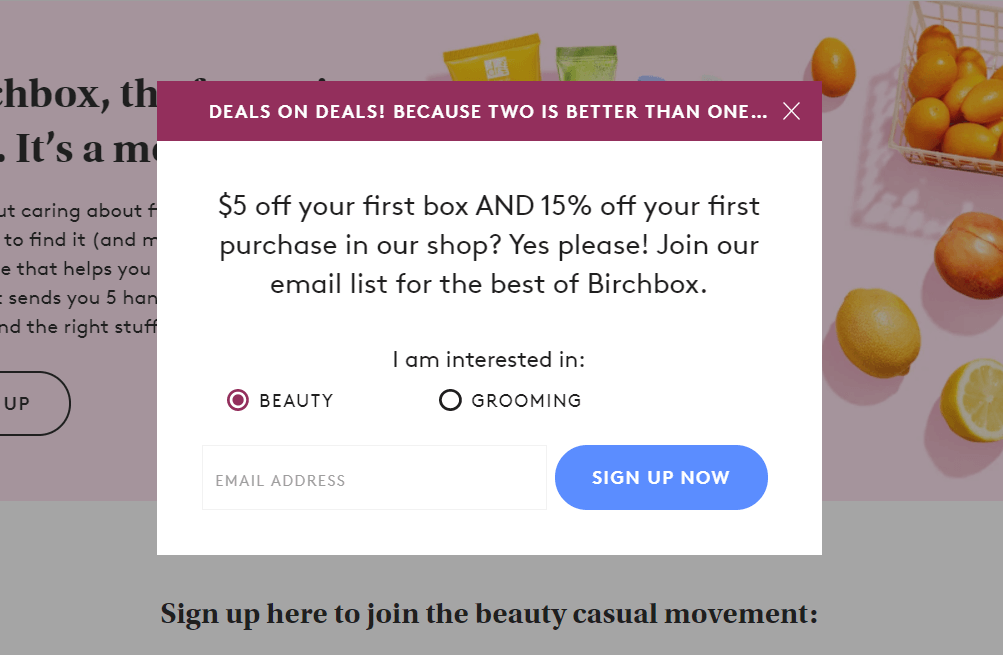
Perhaps, the most interesting case is that of the so-called mystery discount. This creative approach can lead to high conversion rates. So do not stop at the default 10% coupon; test new offers, new messaging, and new imagery or CTAs to create attractive sign-up forms.
6. Customize Experiences Based On Product Types & Traffic Source
The next step is to start customizing your popups and flyouts, depending on the product category they appear in. For example, you can create customized experiences for every product category or use different images and messaging for products targeted to men or women.
An alternative approach is to customize your email sign-up form based on the visitor’s traffic source, such as social media or paid ads. For instance, you can tailor your messaging to the advertising campaign that brought in the user. The ultimate goal here is to turn the website experience into a natural continuation of the advertising campaign.
Bonus: Want to learn how to drive traffic to your e-commerce store with ads? Check this webinar!
You can do this easily by using UTMs parameters. Here’s a quick refresher on what UTM parameters are and their various benefits for your business.
7. Create Lead Magnets To Collect Contact Details
You know well how powerful content marketing can be for your eCommerce business. Specifically, creating lead magnets can be insanely helpful for your visitors and your online store. You can either craft text-based lead magnets, such as cheat sheets and e-books, or video content – e.g., online courses or webinars.
These tactics are prevalent in B2B settings yet incredibly underused in the context of B2C online stores. And that’s unfortunate, as a lead magnet can turn into a greater incentive than a mere discount.
Here’s a lead magnet example by Smart Blogger:
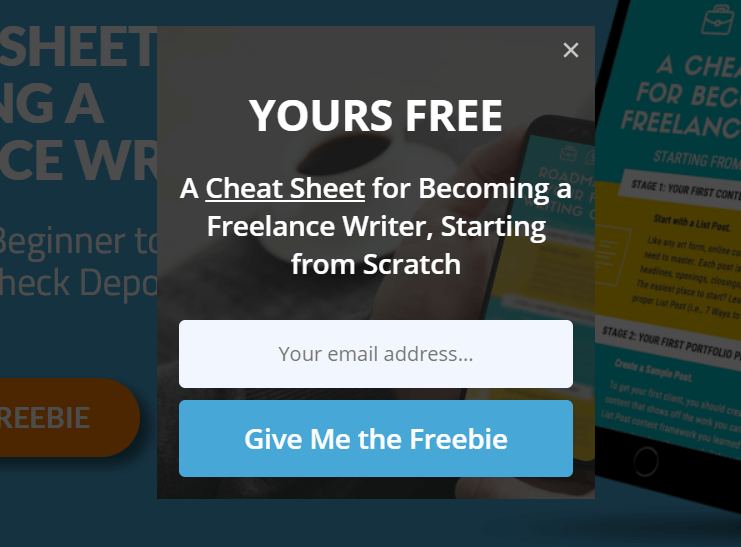
Now let’s imagine that you own an online store that sells photography equipment. Shooting great photos can become incredibly complicated from a technical and a practical standpoint. What kind of lead magnets can you create for your new customers?
Here are some suggestions: You can create a simple video or PDF course teaching beginners how to use their cameras or a cheat sheet of ten mistakes to avoid in your first photoshoot. And if you want to go the extra mile, you can segment users using UTM parameters to present different types of content to different buyer personas (e.g., beginner photographers vs. professionals).
8. Use Interactive Quizzes To Boost Engagement
Interactive quizzes are great lead magnets, too, and can enhance your eCommerce list-building efforts massively. You can ask users to take part in a quiz with the promise of giving them added value. Then, request their email to show them the results.
A best-in-class example is ThirdLove’s size-finder quiz:
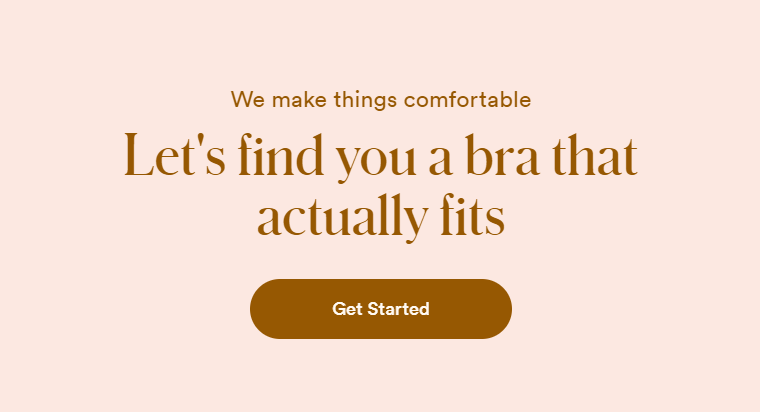
Shopping for the right bra size online is hard. This quiz answers a real pain point for certain buyers. The user is asked a series of questions so that ThirdLove can show them the appropriate bra and underwear.
At the end of the quiz, the user comes across this email sign-up form:
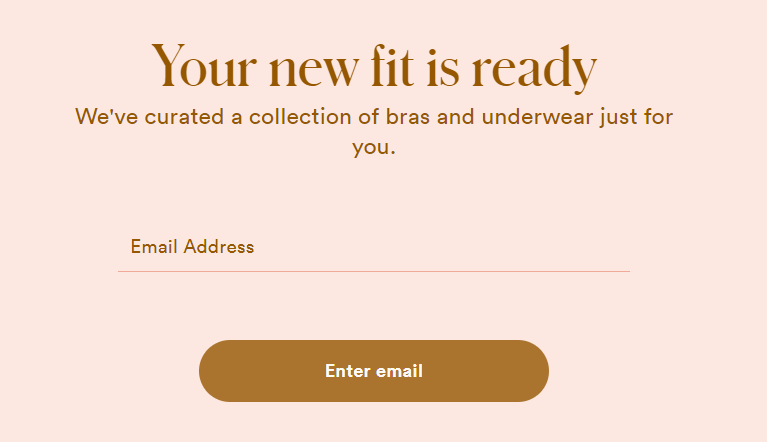
The best part of this approach is how ThirdLove’s marketing team collects data about users during the process, such as their style or size. Thus, you can create more personalized experiences for them in the future. Meanwhile, the user gets a product that is more likely to fit them, so it’s a win-win scenario!
9. Disable Double Opt-in On Your Email Service Provider
Many email service providers (ESPs) start with a double opt-in, adding a step to the email subscription process. So when someone signs up for the first time, they receive a confirmation email. As soon as they confirm their interest, they’re added to the brand’s email list.
The key benefit of having double email opt-in turned on is that you’re only capturing your most motivated users. This will translate into significantly higher open and click-through rates when you start mailing them. But the downside is that you’re not growing your list as much as you could.
So if you want to accelerate your list growth rate, you can disable double-opt-in. However, keep in mind that in this case, you need to establish a regular list-cleaning process at least once every 60 days. Failing to clean your list could lead to email deliverability issues and decrease the performance of your marketing campaigns.
10. Add Signup Forms On Most Visited Blog Posts
Apart from your homepage, where else can you place sign-up forms to attract more leads? If you have a blog that receives decent traffic, you can insert newsletter sign-up forms inside your best-performing blog posts. They can be in the form of pop-ups with a straightforward design and a call-to-action that drives clicks.
Here is an example by Jobvite:
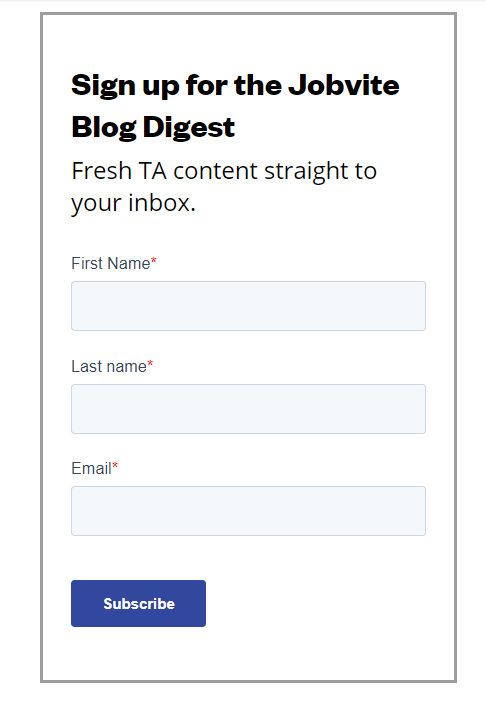
I Have An E-commerce Email List. Now What?
Just because you got a visitor’s email address doesn’t mean the job’s done. You should make the most of your new subscribers. Unfortunately, here’s where things often go wrong for e-commerce brands. The biggest mistake is not treating email marketing as seriously as other marketing activities.
Subject lines, newsletters, transactional emails – all email types are essential for your strategy. But to supercharge your email marketing efforts, you should make three foundational mindset shifts.
Segmentation Is The Basis Of Everything
Every subscriber on your email list is unique. Ecommerce Customer segmentation is the basis of successful email marketing and allows you to send the right marketing messages, to the right subscribers, at the right time. For instance, loyal customers respond to different message types than bargain seekers. Through segmentation, you’ll also manage to filter out inactive subscribers and protect email deliverability.
Automation Can Bring Incredible Results
Marketing automation tools such as Moosend will help you set up all types of campaigns for subscribers at every step of the customer journey. You can track their progress through analytics and reporting tools and adapt your marketing campaigns based on results.
An Email Marketing Platform Is More Than A Sales Tool
On top of driving revenue, email communication is an incredible way to collect valuable data from your customers. Moreover, you can gather product reviews, stimulate social sharing, nurture loyal customers, and ultimately increase the impact of your brand.
Ready To Nail eCommerce List Building In 2021?
The time to invest in email marketing is now. As paid acquisition costs skyrocket, we’re swiftly moving to a new eCommerce economy in which customer experience and customer retention are becoming a core aspect of every email marketing strategy. So think of email as one powerful marketing communication channel you own, which helps you connect with your current and future customers.
What’s next? Sign up for Moosend’s email and marketing automation platform and start building fantastic email campaigns for your customers!


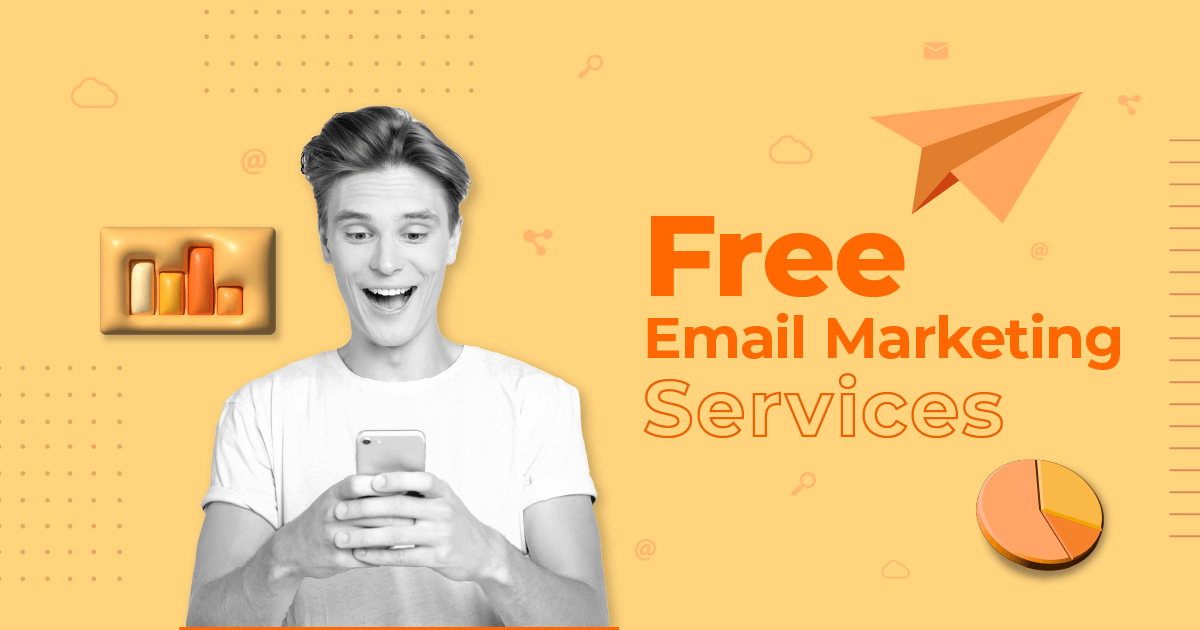
 Published by
Published by

 Published by
Published by